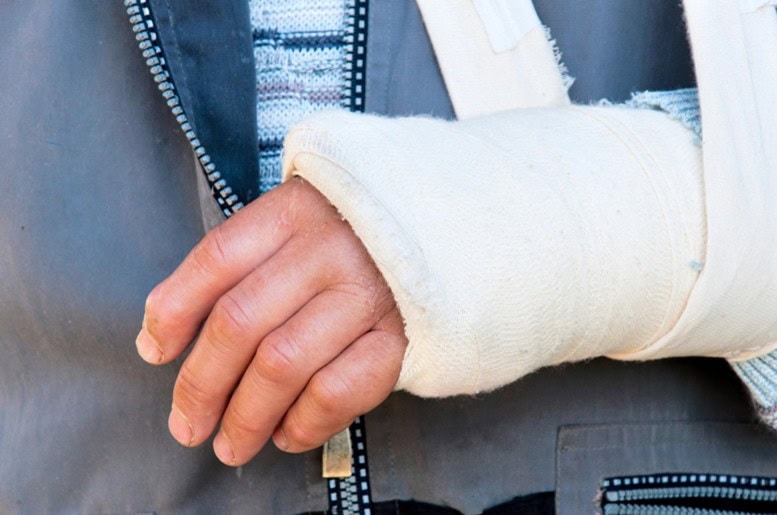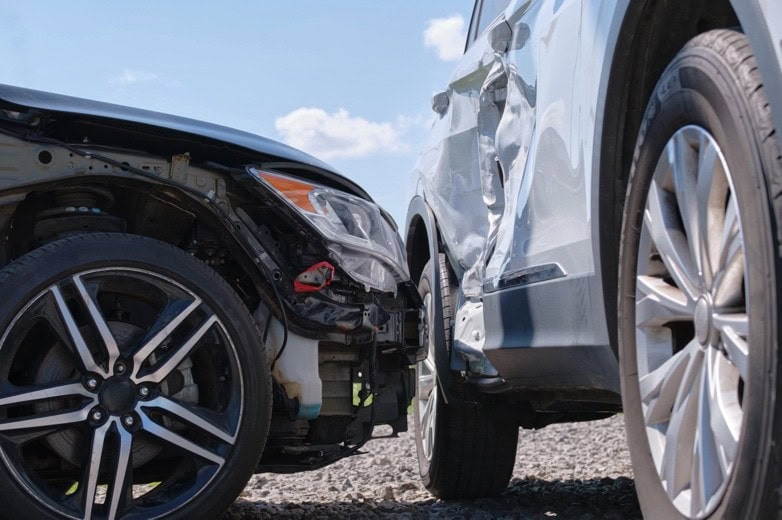Snellings Law PLLC Attorneys are Personal Injury Trial Lawyers
The Impact of Broken Bones: Short-Term Pain, Long-Term Challenges
Key Takeaways:
- Beyond the pain and inconvenience of recovery, serious fractures can lead to chronic pain, reduced mobility, emotional challenges, and ongoing medical expenses that can affect your quality of life.
- Common types of crashes like rear-end, head-on, and side-impact collisions often result in broken bones.
- Seeking immediate medical care, documenting the scene, filing a police report, and consulting an attorney can protect your health and legal rights, ensuring you get the support and compensation you deserve.
Broken bones, or fractures, are some of the most common injuries resulting from accidents. While a broken bone might seem like a straightforward injury, its impact can be life changing. This is especially true if the injury is severe or improperly treated. In this blog, we’ll explore the short-term and long-term effects of broken bones, how they can affect someone’s future, and what to do if you or a loved one is injured.

How Do Serious Broken Bones Happen?
Broken bones can happen in many ways, but car accidents are one of the most common causes of serious fractures. The force of a collision can be so strong that even healthy, strong bones can break. Here are some types of car accidents that often lead to broken bones:

1. Rear-End Collisions
When one vehicle hits the back of another, passengers can be jolted forward violently. This type of accident often leads to broken wrists or arms as people brace themselves during the impact.
2. Head-On Collisions
Head-on crashes involve intense forces that can cause severe injuries, including broken legs, hips, or arms. These accidents are often catastrophic because both vehicles are traveling toward each other at high speeds.
3. Side-Impact Collisions (T-Bone Accidents)
When a car is struck on its side, passengers can sustain broken ribs, clavicles (collarbones), or pelvises. The lack of protection on the sides of a vehicle increases the risk of serious injuries.
For more information about T-bone collisions, watch the video:
4. Rollovers
In a rollover accident, passengers may be thrown around inside the vehicle or even ejected. Broken spines, legs, and arms are common in these high-impact accidents.
5. Pedestrian and Cyclist Accidents
When a car strikes a pedestrian or cyclist, broken bones are almost guaranteed. The legs, hips, and ribs are especially vulnerable in these types of accidents.
Short-Term Effects of Broken Bones
The immediate effects of a broken bone are painful and inconvenient. These short-term impacts include:
1. Pain and Swelling
When a bone breaks, the body reacts with pain and inflammation. This swelling helps protect the injured area but can also make movement difficult.
2. Limited Mobility
A broken bone often requires a cast, brace, or even surgery. This can limit your ability to perform everyday tasks like driving, working, or even walking.
3. Time Off Work or School
Recovering from a broken bone usually requires rest, which can mean missing work or school. This time away can lead to financial strain and falling behind on responsibilities.

4. Need for Assistance
Broken bones often require help from others. You might need assistance with cooking, cleaning, or even getting dressed, depending on the severity of the injury.
5. Medical Expenses
Emergency care, X-rays, casts, surgeries, and physical therapy can quickly add up. Even with insurance, the out-of-pocket costs can be overwhelming.
Long-Term Effects of Broken Bones
While many broken bones heal with time, some have long-lasting consequences. Serious fractures can change the way you live your life and may even impact your future.
1. Chronic Pain
Even after a bone heals, some people experience ongoing pain. This is especially true for complex fractures or those that don’t heal correctly.
2. Reduced Mobility or Function
A serious break can lead to permanent stiffness or loss of function. For example, a badly broken leg may leave you with a limp, or a wrist injury might make it hard to write or type.
3. Long-Term Medical Needs
Some fractures require additional surgeries, physical therapy, or ongoing medical care to fully recover. This can be both time-consuming and expensive.
4. Impact on Future Activities
Broken bones can end participation in certain sports or activities, especially if the injury involves weight-bearing bones like the legs or hips. For example, a football player with a severe leg fracture might never return to the game.
5. Emotional Toll
Dealing with a serious injury can be emotionally draining. You might feel frustrated by your limitations or worried about your future. Some people even experience depression or anxiety after a serious injury.
How to Protect Yourself on the Road
Since car accidents are a leading cause of broken bones, it’s important to take steps to stay safe when traveling. Here are some tips:
- Wear Your Seat Belt: Seat belts can prevent many serious injuries by keeping you secure during a crash.
- Follow Traffic Laws: Obey speed limits, stop at red lights, and use your turn signals.
- Avoid Distractions: Keep your focus on the road, and don’t text or use your phone while driving.
- Don’t Drive Under the Influence: Alcohol and drugs impair your ability to drive safely.
- Stay Alert: Be aware of other drivers, pedestrians, and cyclists. Always check your surroundings before changing lanes or turning.
- Keep Your Car in Good Condition: Make sure your brakes, tires, and lights are working properly before hitting the road.
What to Do If You’re Injured in a Car Accident
If you’re involved in a car accident that results in a broken bone, taking the right steps can help protect your health and your rights:
1. Seek Medical Attention Immediately: Even if you think your injury isn’t serious, see a doctor. Some fractures aren’t immediately visible.
2. Document the Scene: Take photos of the accident, your injuries, and any property damage.
3. Get Witness Information: If anyone saw the accident, ask for their contact details.
4. File a Police Report: A police report can be an important piece of evidence if you decide to pursue a legal claim.
5. Consult an Attorney: A personal injury lawyer can help you navigate the legal process and fight for a fair resolution.
Our goal is to ensure you receive a fair resolution for medical expenses, lost wages, pain and suffering, and other damages.
How Snellings Law Can Help
At Snellings Law, we understand the physical, emotional, and financial toll a serious injury can take. Our team has experience helping clients recover for medical bills, lost wages, pain and suffering, and more. We work with medical experts and accident reconstruction specialists to build strong cases for our clients.
If you or a loved one has suffered a serious injury in a car accident, don’t wait to get help. Contact Snellings Law today for a free consultation. We’ll review your case and help you understand your legal options.
Get Back on Your Feet with the Right Support
Broken bones can have far-reaching effects, from the pain and inconvenience of recovery to long-term impacts on your health and lifestyle. By staying vigilant on the road and knowing what steps to take after an injury, you can protect yourself and your future.
Remember, Snellings Law is here to support you. If you’ve been injured in an accident, reach out to us at (214) 387-0387 or visit SnellingsInjuryLaw.com to schedule your free consultation.
Let us help you get back on your feet and move forward after a serious injury.

How it works:
- Call us now or give us your basic information in the Free Strategy Session box
- If your case is something we cannot help you with, we will do our best to get you the information of someone who can.
- If we can potentially help you, we will schedule a Free Strategy Session
There is zero obligation. We want all injury victims to understand their rights and the process.
After your Free Strategy Session, you will understand where insurance companies can set traps for you and what needs to be done to avoid these traps. You will also understand the personal injury process as well as how we can help, or if you need the help of an attorney. The strategy session typically will have one of three outcomes. You:
- Decide to move forward with our law firm.
- Decide to think about it, and we will be available to answer your questions.
- Say, “I’ve got this,” and decide you do not need an attorney.
Again, there is zero obligation and you will be informed and understand your rights and the process. We want to arm you with knowledge to avoid the traps insurance companies set to harm your claim.
Slip and Falls
Wet floors, uneven pavement, or icy walkways can cause people to slip and suffer severe injuries. Traumatic brain injuries (TBI), broken bones, and spinal cord injuries are all common severe injuries that can occur from a slip and fall. A direct blow to the head during a fall can lead to concussions, skull fractures, or severe brain trauma. Spinal cord injuries are another significant risk. Fractures and broken bones, particularly in the hips, wrists, and ankles, are also common. These can lead to permanent mobility issues, especially in older adults.
The long-term impacts of these injuries extend beyond physical pain. Ongoing medical treatments, surgeries, and rehabilitation can lead to overwhelming expenses. Permanent injuries may limit daily activities and reduce independence. This can significantly affect one’s quality of life. Emotional strain, including anxiety and depression, often accompanies chronic pain and reduced mobility.

